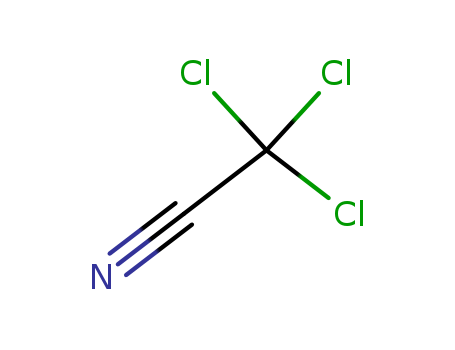10.1021/ol200312q
The research focuses on the rapid construction of the [5-6-7] tricyclic ring skeleton of Calyciphylline alkaloids, specifically targeting Daphnilongeranin B. The study employs a concise photochemical [2+2] cycloaddition-Grob fragmentation sequence to synthesize the common tricyclic ring skeletons found in Calyciphylline A-type alkaloids, including daphnilongeranins, daphniyunnines, and daphniglaucins. The experiments utilize key steps such as Overman rearrangement, Mannich reaction, [2+2] photochemical cycloaddition, and Grob fragmentation. Reactants include (S)-(+)-carvone as the starting material, which is converted through a series of reactions involving CCl3CN, MOMCl, TBSOTf, and other reagents to construct the tricyclic core. The analyses used to confirm the structures and stereochemistry of the synthesized compounds include single crystal X-ray analysis and NMR spectroscopy, with detailed experimental procedures and compound characterization data provided in the supporting information.
10.1002/ejoc.200801173
The research presents a novel and concise synthetic route to produce 2-amino-3-hydroxycycloalkanecarboxylic acids, which are important for their pharmacological activities and as building blocks for biologically active compounds. The study aims to develop a simple and efficient method to synthesize these compounds using trichloroacetimidates, which are generated either in situ or prepared and isolated from methyl 3-hydroxycycloalk-1-enecarboxylates. The key chemicals used include trichloroacetonitrile, DBU (1,8-diazabicyclo[5.4.0]undec-7-ene), and various solvents such as acetonitrile, methanol, THF, and CH2Cl2. The researchers found that the intramolecular conjugate addition of trichloroacetimidates to cycloalkenecarboxylates effectively produced oxazolines, which were then cleaved to yield the desired 2-amino-3-hydroxycycloalkanecarboxylic acids. The study concludes that this method provides a stereoselective and efficient route to synthesize these polyfunctionalized carbocyclic compounds, with high yields and excellent stereocontrol. The one-pot synthesis procedure was also explored, demonstrating the potential for practical application in the synthesis of these important amino acids and their derivatives.
10.1080/00397910802281429
The research develop an efficient synthetic route for creating three new polyhydroxylated amino cyclohexane derivatives (aminocyclitols) from D-(-)-quinic acid, with the potential for significant biological activities, particularly as glycosidase inhibitors. The key steps involved the highly stereoselective dihydroxylation of protected azido cyclohexene derivatives (5, 9, and 15), which were derived from D-(-)-quinic acid. The subsequent hydrogenation under acidic conditions yielded the target aminocyclitols (1, 2, and 3) with high overall yields. The study successfully demonstrated a general and efficient route for synthesizing these compounds, which are expected to be valuable for future biological studies and as intermediates in the synthesis of antibiotics. Key chemicals used in the research include D-(-)-quinic acid, KMnO4, MgSO4, trichloroacetonitrile, DBU, and various protecting and deprotecting agents such as methanesulfonyl chloride and lithium hydroxide. The conclusions highlight the high diastereoselectivity of the dihydroxylation process and the feasibility of the synthetic route, paving the way for further exploration of the biological potential of these new aminocyclitols.
10.1021/ol048649m
The study investigates the Mannich-type C-nucleosidation reactions of 2,6-(oxo or amino)-disubstituted 5,8-diaza-7,9-dicarba-purines, a family of nucleobase analogues that are isomeric to natural purine nucleobases like adenine and guanine. The researchers synthesized various purinoids (1-4) and their adenine analogue using different chemical methods. For instance, the guanine analogue (2) was synthesized from N-formyl-glycyl-guanidine and trichloroacetonitrile through a series of reactions including hydrolysis and cyclization. The isoguanine analogue (3) and xanthine analogue (4) were prepared from 5-aminoimidazole using different reagents and reaction conditions. The study found that all these purinoids can undergo Mannich-type C-nucleosidation reactions with cyclic iminium salts, such as pyrroline derivatives (12 and 15), under mild conditions to form C-nucleosides. These C-nucleosides are isosteric with conventional N-nucleosides of natural purines. The reactivity of the purinoids in these C-nucleosidation reactions varies, with the 2,6-diamino derivative (1) being the most reactive and the 2-deamino derivative (adenine analogue) being the least reactive. The study also explored the stability and configuration of the resulting nucleosides, as well as the potential tautomerism in the isoguanine analogue (3). The findings suggest that these purinoids could be useful in studying the chemical etiology of nucleic acid structure and have potential applications in informational chemistry, medicinal chemistry, and chemical biology.
10.1016/j.tetlet.2013.07.029
The study presents a copper-catalyzed one-pot synthesis of alkynyl imidates and alkynyl thioimidates through a coupling reaction involving terminal alkynes, trichloroimidates generated in situ from trichloroacetonitrile and benzyl alcohols or thiols. The key chemicals include phenylacetylene as a model terminal alkyne, trichloroacetonitrile as a precursor for trichloroimidates, and benzyl alcohol or thiol as the source of the imidate or thioimidate group. Copper iodide (CuI) acts as the catalyst, and triethylamine (Et3N) is used as a base. The reaction is optimized in acetonitrile at room temperature, yielding the desired products in good yields. The mechanism involves the formation of a copper acetylide intermediate, which reacts with the trichloroimidates to form a tetrahedral intermediate, followed by the elimination of CuCCl3 to produce the final products. This method offers a versatile and efficient route for synthesizing functionalized alkynes with readily available starting materials and catalysts.



 T,
T,  N
N


